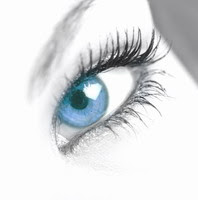If you're like me, you've probably heard about some of the side effects associated with getting lasik vision correction surgery. For instance, after getting lasik surgery some people complain about symptoms of glare, halos and decreased night vision.
In fact, I remember attending a business briefing where the speaker started by mentioning he just had lasik surgery the day before. He told the audience, "The good news is I think you're all going to heaven because everyone has halos around their heads!"
If you've considered getting lasik surgery but were concerned about some of the less-than-desirable side effects, you'll be glad to hear that new technology is reducing those dreaded halos and glare. Known as "custom" or wavefront-guided lasik, this relatively recent improvement in eye surgery technology produces better vision quality when compared to traditional lasik vision surgery.
"Most significant," says US Navy Captain Steve Schallhorn, MD, the Director of Cornea and Refractive Surgery at the Navy Medical Center, San Diego, "is the improved quality of vision with the wavefront-guided procedure, fewer problems with halos and glare, better night vision, and higher patient satisfaction."
Traditional lasik reshapes the patient's cornea with a laser to correct visual problems like nearsightedness or farsightedness. With conventional lasik, the laser is guided based on formulas similar to the ones used to determine your eyeglass prescription. Conventional lasik is effective at treating "lower-order" aberrations like nearsightedness, farsightedness and astigmatism (also called "refractive errors").
Wavefront-guided lasik, on the other hand, measures how light is distorted as it passes into the eye and then is reflected back. This creates a 3-D optical map of the eye, highlighting the imperfections and disorders that lead to visual errors. Wavefront technology then creates a custom treatment plan for each eye and guides the laser during the surgery.
Wavefront-guided lasik can effectively treat the same lower-order aberrations that conventional lasik can treat as well as treating "higher-order" aberrations such as decreased contrast sensitivity, night vision, glare, shadows and halos. In fact, there are a growing number of patients turning to wavefront-guided lasik to correct side effects from previous laser eye surgeries.
"With this technology breakthrough, we can now measure these disorders, show the patient what's going on in their eye, link that information to the laser, and actually correct higher-order aberrations," says Roger Steinert, M.D., associate clinical professor of ophthalmology, Harvard Medical School. "Wavefront technology enables the surgeon to improve overall vision quality better than in the past."
Of course, this advanced technology comes with a higher price tag than traditional lasik surgery. And just like conventional lasik, wavefront-guided lasik is a surgical procedure and has risks associated with it. Be sure to consult with a qualified lasik surgeon to discuss potential complications and ensure you're a good candidate for this type of surgery.
But if the choice is between crystal clear vision with no side effects and going through life seeing all the people going to heaven, I think I'll go with the first option, please!
Marc Menninger is an online researcher seriously considering lasik vision correction surgery. For more information on lasik vision surgery, take a look at his research on his Lasik Information blog: http://www.lasikvisionblog.com/
Saturday, January 5, 2008
Lasik Vision Surgery: New Technology Prevents Side Effects
Subscribe to:
Post Comments (Atom)

No comments:
Post a Comment